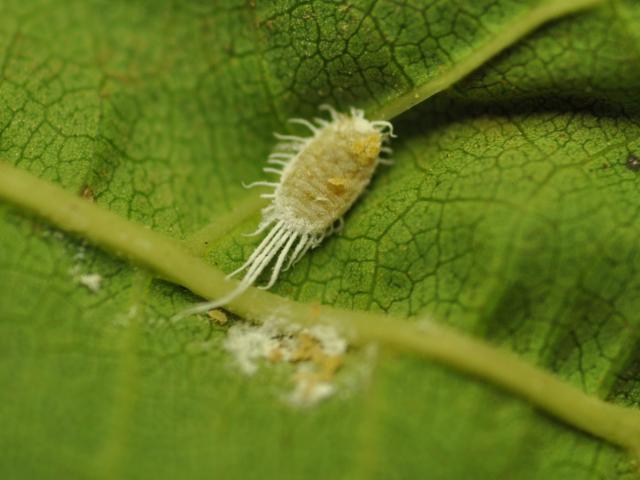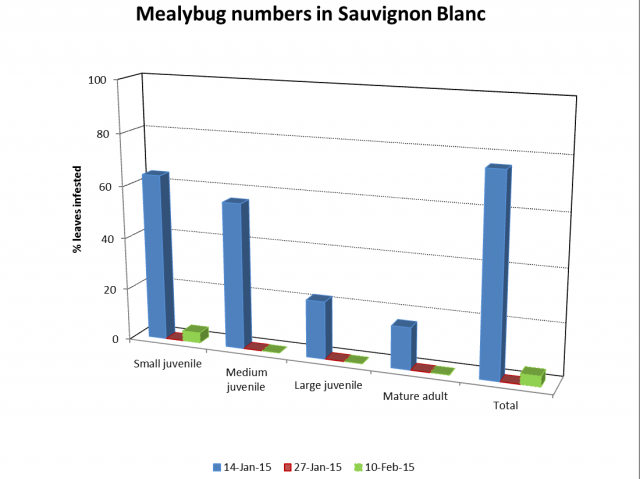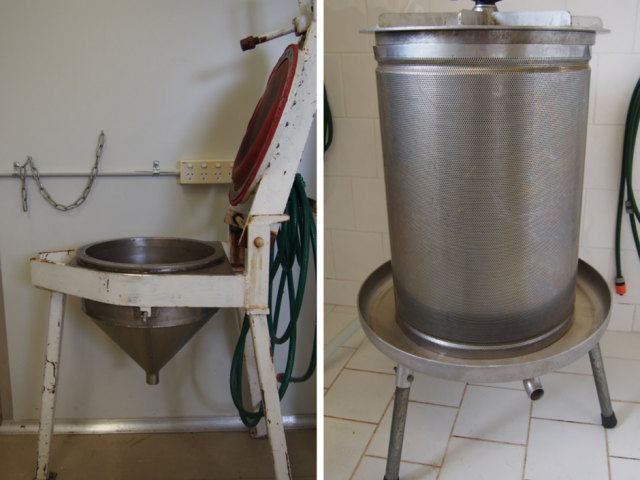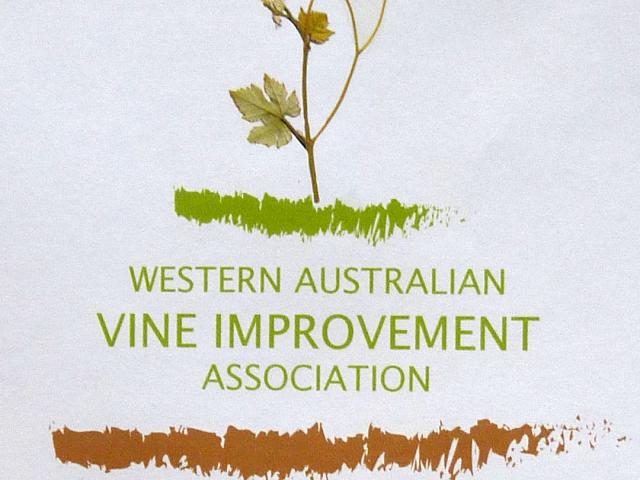Smoke update
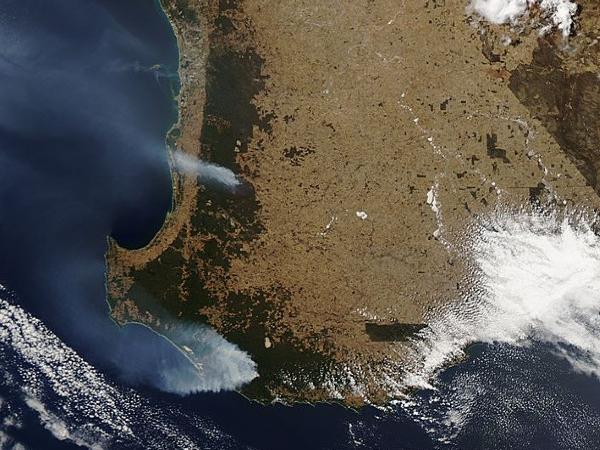
Producers who are concerned that smoke in their vineyard may have affected grapes and wine are assessing the potential for smoke taint and managing the risk.
Grape growers and winemakers with these concerns are advised to conduct pre-harvest mini-ferments. The resultant wine can be assessed by sensory and chemical analysis to gauge the potential risk of any smoke taint. It is most important to analyse for the bound smoke phenol compounds as this gives the best estimation of the final concentration of smoke compounds in wine.
Further information and details on mini-ferments, the analysis available for measuring the volatile and bound smoke compounds in grapes and wine, and interpretation of the results are given on the Australian Wine Research Institute (AWRI) and DAFWA websites.
DAFWA Bulletin ‘Effect of smoke in grape and wine production’ is available on request.
Over the last few years, research has given us a much better understanding of the effect of smoke on grapes and wine and the tools to assess and manage the risk of smoke taint.
The following is a summary of our current state of knowledge from DAFWA, AWRI, Curtin University, University of Adelaide, DELWP Vic (formerly DPI Vic) and other sources.
There are several factors that contribute to smoke uptake by grapevines and the risk of smoke taint in grapes and wine.
The main modes of entry of smoke into grapevines are by direct absorption into berries and leaves. Although smoke compounds accumulate in leaves, translocation to the fruit may be minimal. Grapevines of our main varieties are most sensitive to smoke uptake from 7 days post-veraison to harvest.
The concentrations of smoke taint compounds are highest in the berry skins. This has important implications for vineyard and winemaking techniques employed to reduce the concentration of smoke-related aromas, flavours and compounds in wine.
The risk of smoke taint in grapes and wine is highly dependent on the concentration and duration of smoke exposure in the vineyard.
Smoke exposure can be measured quantitatively and continuously by nephelometers. This is important as smoke may fluctuate diurnally.
‘Visibility’ assessments of smoke are unreliable and do not work at night. Nephelometers do not measure the composition of smoke. Smoke can be localised and vary within the vineyard.
Smoke composition is important. Smoke consists of thousands of different compounds. Researchers have identified many of the compounds that are responsible for smoke taint in grapes and wine.
The sensory thresholds of several of these compounds have been measured in specific wines. These compounds may exist in grapes in non-smoke years.
It is important to understand that varieties can have different background or naturally occurring levels when interpreting test results. For example Shiraz grapes and wine have higher background levels of many of these smoke compounds compared to other varieties.
The age of the smoke also seems to be important. These compounds are broken down considerably within four to six hours when smoke is exposed to UV light during the day.
Smoke taint gets worse as wine ages. The concentration of smoke compounds can be 80 to 100 times greater in the wine than in the grapes that have been affected by smoke.
This is because most of the volatile smoke compounds taken in by grapevines become bound to glycosides. The bound form is then released as volatiles by enzyme and acid hydrolysis during fermentation and storage of the wine.
It is most important to measure the bound form in grapes and wine as this gives the best estimation of the final concentration of smoke compounds.
Mini-ferments can be conducted when fruit is 8-9° Baumé (14.5-16.2° Brix). Mini- fermentation will release about 80% of the bound smoke compounds within three to four days. It is not necessary to ferment to dryness to assess the sensory effect of smoke.
Grape and wine samples can be analysed by AWRI or some local analytical services. Sending grapes and wine from WA to South Australia (AWRI) for analysis does not require a Plant Health Certificate if grapes are frozen and wine is in a sealed container. Samples must be accompanied by a ‘Grape material movement and declaration’ form available on the AWRI website.
There are several management techniques that can be employed in the vineyard and winery to reduce the concentration of smoke-related aromas, flavours and compounds in the final wine.
During harvest these include the gentle handling of grapes to keep skin intact, removing leaf material and keeping fruit cool. In the winery considerations include reducing time on skins, separating press fractions and addition of oak and tannin. Reverse osmosis is unsuccessful as this technique only removes the free phenols which are replaced during hydrolysis of the bound forms as the wine ages.
Grape growers and winemakers are using this latest information and tools in their quality systems to ensure that any grapes or wine adversely affected by smoke do not reach the consumer.
For further information or advice please contact Glynn Ward on +61 (0)8 9368 3568, or AWRI (winemaking@awri.com.au).
Wines of Western Australia promotes national tax campaign to Prime Minister

While industry support was expressed for recently signed Free Trade Agreements with China, Japan and Korea, the group emphasised the need for resources to support increased market development activities in these countries if the potential is to be fully realised.
There was unanimous support expressed by the group for the Winemakers’ Federation of Australia (WFA) strategy to achieve this. Accolade Wines, represented by Board Chairman Nick Greiner, General Counsel Jeremy Stevenson and Head Winemaker Ross Pamment strongly backed the strategy as did John Griffiths, owner of local small winery Faber.
The result was a strong message directed to the Prime Minister about our industry's unanimous commitment to positive reform and self-determination.
The WFA strategy to amend WET rebate eligibility as a source of extra funding to support market development was presented to the PM and Mr Porter. The strategy outlines steps to ensure the wine equalisation tax (WET) rebate is retained for Australian wine businesses with the following amendments:
- remove rebate eligibility for New Zealand producers providing up to $45 million in savings for the federal government over 4 years
- phase out rebates on bulk, unbranded and private label over a 4 year period (at 25% per year to allow industry to adjust) estimated to yield $202 million in savings for the federal government
- Reinvest a portion of the combined savings ($25 million over the 4 year period) to grow demand across multiple markets, benefitting all genuine Australian wine producers
The WFA aims to ensure these amendments are included in the May 2015 budget.
Mr Porter requested a subsequent meeting with Wines of WA to discuss the strategy in greater detail.
Advocating on behalf of WA wine producers, Wines of WA has been a consistent supporter of the WFA on this issue. Wines of WA Chair, Redmond Sweeny said, “it is important to note that this view is the result of an exhaustive consultation process WFA has conducted throughout 2013/2014 with industry.
WA is mostly populated with small winemakers, and we firmly believe our views were listened to and adopted into a balanced and sustainable position for all of industry to take forward.”
Federation Chief Executive Paul Evans welcomed the support from the west.
“Support from a state association representing producers in its fine wine regions show the Australian Government that industry is united,” Mr Evans said.
For more information about how you can support the WFA campaign, see here – Oz Wine Matters!
Mealybug still a challenge
This season DAFWA undertook mealybug monitoring in a southern Margaret River vineyard with some interesting results and a couple of surprises.
In this vineyard over the past few seasons, mealybug rotated as a pest across varieties with each being most severely affected in different seasons. This year, for the first time known mealybug resulted in a severe infestation in Cabernet Sauvignon and a significant amount of crop had to be dropped.
In subsequent years, Merlot was worst affected while the infestation in the Cabernet block virtually disappeared – and we don’t know why. A year later there were low pest levels in the Merlot but it seemed the pest moved onto the vineyards two Chardonnay blocks where heavy damage was incurred. Even with early season monitoring which showed low numbers present at 80% capfall, the pest appeared “from nowhere” to cause severe problems at vintage.
Monitoring was conducted in the Chardonnay blocks in the 2014/15 season. In one of the blocks, different insecticide use strategies were compared in non-replicated small parcels. Insecticides used included Chlorpyrifos, Applaud® and Samurai. All treatments appeared to hold the mealybugs to below an acceptable grape quality threshold when compared with an area that remained untreated.
The surprise of this season was an 'outbreak' of mealybugs in a block of Sauvignon Blanc. This variety had been mealybug free over many seasons and consequently when the infestation was noticed in mid-January, the full range of stages of mealybugs was present. As the grapes in this block were only destined for the domestic market, the insecticide Methomyl was applied.
This insecticide was selected based on its reputation for controlling mealybugs in table grapes and its relatively short withholding period. Two applications a week apart were made from mid-January with surprisingly good results (see Figure 1). Unfortunately there were some mealybugs in bunches that were not as well controlled, but the level of infestation was low enough to allow the harvest to proceed.
While there are more insecticides available to treat mealybug (Movento® will possibly join this group next season), the lack of effective chemicals after 80% capfall for export destined wine remains a constraint to wine production in WA. Our limited understanding of the life cycle of the insect only adds to the challenge. The source of crawlers that sometimes appear in grapevines after 80% capfall still remains a mystery.
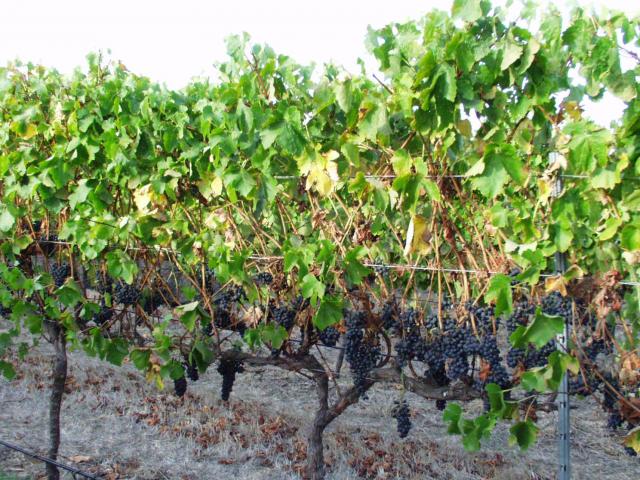
Mealybugs will remain a challenge until we can understand their dynamics in vineyards like why they switch varieties and why they appear at times without warning during the growing season.
How was your season for mealybug activity? We’d love to hear from you - successes in managing the pest or otherwise and whether your crop sustained losses.
If you’d like to make a comment, please contact Stewart Learmonth or Helen Collie on +61 (0)8 9777 0000.
Pest risk analysis update
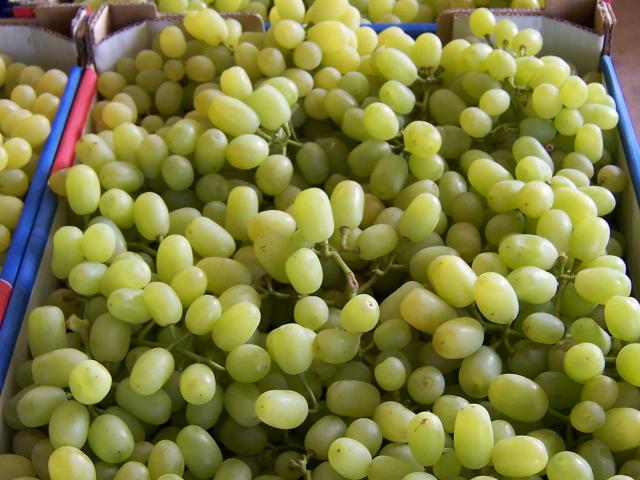
As part of the pest risk analysis (PRA) process, the department prepared a draft pest categorisation of pests and diseases potentially associated with viticulture production in Australia. The categorisation process assessed 622 organisms and determined 14 invertebrate and 13 pathogen organisms met the International Plant Protection Convention definition of a quarantine pest, with the potential to establish and be of economic importance to Western Australia.
The department undertook a consultation period for the draft pest categorisation component of the PRA process from 19 December 2014 until 14 February 2015. It was made available on the departmental website and circulated to the Commonwealth, state and territory government departments and registered stakeholders for comment.
The department is currently reviewing stakeholder submissions and will incorporate relevant information into the final pest categorisation report where appropriate.
The quarantine pests identified in the pest categorisation are undergoing pest risk assessments to determine their unrestricted risk to Western Australia. Phytosanitary risk mitigation measures will be considered for pests that pose an unacceptable risk to Western Australia, with consideration of their efficacy and compliance with international and national obligations.
The draft PRA — including any risk mitigation recommendations — will be released for stakeholder consultation. This will provide the opportunity for stakeholders to comment and draw attention to any scientific, technical, or other gaps in the data, misinterpretations or errors, which will be reviewed by the department prior to finalising the PRA..
DAFWA uses a stakeholder register to distribute PRA information to relevant stakeholders. To register to become a stakeholder and receive information in relation to this PRA via email, please email plantbiosecuritypolicy@agric.wa.gov.au and include your full name, company name and position title.
A meeting to update stakeholders on the progress and methodology employed by the department in conducting a PRA is planned for April. Stakeholders will be notified via email of the date once confirmed.
For more information contact plantbiosecuritypolicy@agric.wa.gov.au.
More Dollars per Drop in the Vineyard.
The More Dollars per Drop project continues to operate in the viticulture sector with seven vineyards participating to date. Subdued interest from wine grape producers has never the less provided some interesting insight into the industry’s irrigation systems and practices.
Four properties have been completely assessed, all four have professionally designed systems that are well maintained. Only small variations in pressure, flow and resulting uniformity of delivery were found in these correctly designed and operated systems. Small changes that will improve drip line performance and improve system operating pressures were recommended in these cases.
Soil moisture monitoring is not universally employed, with properties opting to observe vine stress markers in preference to soil moisture content. Soil moisture probes can be used to compliment field observation and are considered invaluable feedback tools providing relative information and irrigation triggers. DAFWA continues to strongly recommend their use in irrigated crops.
The grower can be confident that every plant in the vineyard is receiving the same volume when a system is uniformly distributing irrigation water. Please get hold of the More Dollars per Drop team if you have concerns around your irrigation system design or its current operating condition.
Contact us at irrigate@agric.wa.gov.au or through the link on the project web page.
Vintage underway at DAFWA
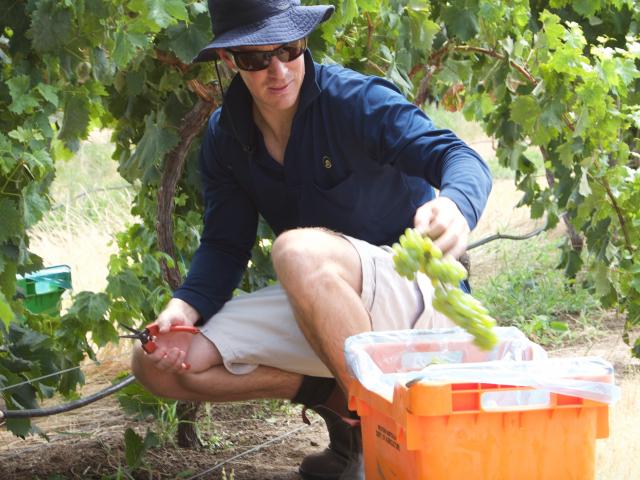
Each year a number of research projects undertaken by the department comprise a winemaking component. This year we are seeing a continuation of two national projects; ‘Assessing clonal variability in Chardonnay and Shiraz for future climate change’ and ‘Genomic basis of clonal variation in Cabernet Sauvignon wine grapes’.
These two projects comprise 1600kg of fruit and 38 separate batches, batch sizes range from 15 to 50kg lots. This amount of fruit brings DAFWA’s small wine laboratory to capacity however staff will be pushing the limits and squeezing in another winemaking project. The third project will be examining the impact of three different crop loads on Tempranillo wine quality. With only 90kg of fruit required for this project we are hoping for an easy squeeze.
Although the wine laboratory is modest in size and equipment, there has been a new addition to help processing efficiencies. For a number of years all grapes processed at the department had been pressed via an old yet trusty 15kg capacity press. Although perfect for handling small volumes of fruit, it had in previous years proved a bottleneck when processing parcels in excess of 20kg.
This year a second press has been installed with a whopping 80kg capacity which is providing a significant improvement in the processing time for ‘large’ batches.
Wines produced from the 2015 vintage will be used for chemical and sensory analysis and also for industry workshops.
Upcoming Regional Program field days
The Regional Program is a key initiative of the Australian Grape Wine Authority (AGWA) that seeks to actively encourage and support innovation, extension and adoption of R&D in the Australian wine sector.
The program aims to help grape growers and winemakers adopt new tools and research findings to support a competitive Australian wine sector.
Field days in Margaret River and the Swan Valley have been scheduled in May to present information on a number of trials and demonstrations and are ideally suited to viticulturists, vineyard managers and technical staff.
The program for each field day will consist of;
- Dr Tony Proffitt from AHA Viticulture will provide information about Unmanned Aerial Vehicles (UAVs or drones) and their potential use in vineyards. One or more UAV’s will be available to inspect.
- Glynn Ward and Rohan Prince from DAFWA will demonstrate the ‘MyPest’ app for grape pest and disease surveillance and diagnosis, and the latest results from the ‘More dollars for your drop’ water use efficiency vineyard demonstration site will be presented.
- Dr Mardi Longbottom from the Australian Wine Research Institute (AWRI) will discuss outcomes from the federal Department of Agriculture funded fertiliser efficiency trials.
- David Botting from the Howard Park Wines will present on different techniques they have trialled to manage extreme heat and wind events in the vineyard.
See the Future events page for event details.
Wines of Western Australia (WoWA) manage the Regional Program for WA with support from the WA wine industry technical committee and Perth Region Natural Resource Management.
The technical committee welcomes input into the development of the yearly program from all industry stakeholders.
If you would like to provide comment or input into future programs please contact WoWA CEO Larry Jorgenson.
Deadline for propagation material
If you are considering new plantings for 2015 then 30 April is an important date to make note of.
Each year the Western Australian Vine Improvement Association (WAVIA) receive orders for propagation material from its collection of over 130 varieties and 180 clones of wine, table, multi-purpose and drying grapes and rootstock material.
To view the list of varieties and clones available and information on how to place an order click on the link to the WAVIA webpage.
Applications close at 2.00pm on 30 April, no late orders will be accepted.
Future events
Wine Business Solutions Workshop
This two day workshop has been designed to show you how to enhance your unique selling proposition, build and engage your customer base directly, define your paths to market, as well as how to select, manage and get the very best from your partners.
When: 16–17 April
Where: Sanctuary Resort, Bunbury
More information on the program and registration details can be found at http://www.winebusinesssolutions.com.au/WA%20Training/WA%20Workshop%202015.pdf
Australian Grape and Wine Authority, Regional’s WA program - 2015 field days
Local and interstate speakers will present information from current field trials and demonstration sites covering the following topics;
- unmanned aerial vehicles
- new pest and disease surveillance and diagnostic tools
- water use efficiency
- fertiliser efficiency
- techniques to manage extreme heat and wind in the vineyard
These field days represent a great opportunity for viticulturists, vineyard managers and technical staff to see and hear from a range of speakers on practical information to assist in their vineyard operations.
Margaret River
Date: Tuesday 26 May
Location: Howard Park Winery (Wine Chapel room), Miamup Road Cowaramup
Time: 8:30am – 12:00pm with coffee from 8:00am and lunch provided at 12:00pm
Cost: Free for levy paying wine grape industry stakeholders, otherwise $25.00 at the door
Swan Valley
Date: Thursday 28 May
Location: Faber Vineyard, 233 Haddrill Road Baskerville
Time: 8:30am – 12:00pm with coffee from 8:00am and lunch provided at 12:00pm
Cost: Free for levy paying wine grape industry stakeholders, otherwise $25.00 at the door
To RSVP for either field day contact Jodie on +61 (0)8 9284 3355 or email reception@winewa.asn.au
For more information on the field days call Keith Pekin on +61 (0)466 744 957
WineTech 2015
The national wine industry supplier trade show.
When: 14-16 July
Where: Adelaide Showground, SA
Please see the events website for further details.
Cowaramup Agencies Viticultural Trade Day
When: 22 July
Details will be confirmed closer to the date of the event.

